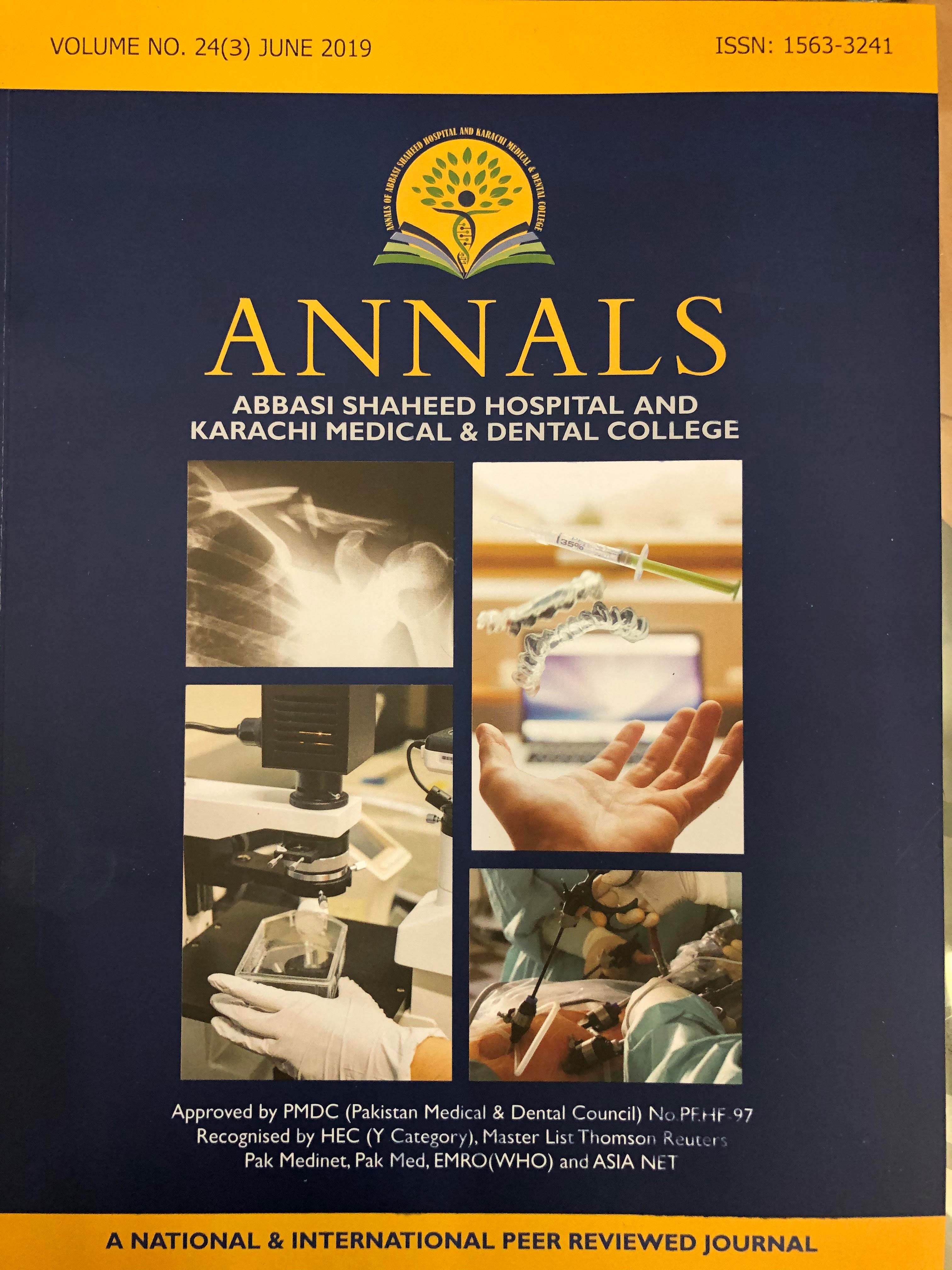Effect of Chorioamnionitis on Neonatal Outcome: A Hospital-Based Study
DOI:
https://doi.org/10.58397/ashkmdc.v24i3.5Keywords:
Chorioamnionitis, neonatal outcome, mortality, morbidityAbstract
Objective: The aim of this study was to determine the impact of chorioamnionitis on neonatal outcome.
Methods: This cross-section descriptive study was conducted in the neonatal intensive care unit (NICU) of the Department of Pediatrics, Liaquat National Hospital Karachi from June 1st, 2016 to December 31st, 2016. Neonates (infants < 28 days of age) with maternal risk factors indicative of chorioamnionitis (maternal febrile illness in last trimester, high WBC count in maternal blood, lower abdominal pain or tenderness, and foul-smelling discharge) were included in the study. The neonates with an inborn error of metabolism and congenital anomalies were excluded from this study. The neonates were further categorized by gestational age as a term (gestational age >37 weeks) and preterm (gestational age <37 weeks). The neonatal outcome is classified into binary categories; dead or alive. Data were recorded by the data collectors in the predesigned proforma. The data were entered and analyzed using SPSS version 22.
Results: During the study period, 1200 women delivered a singleton baby, out of which 400 were admitted at NICU. Of 400 infants, a total of 68 neonates of mothers with the indication of chorioamnionitis were enrolled in the study. The mean age of enrolled neonates was 2.55 ± 1.22 days. Out of 68 neonate babies, 33 (48.5%) were males and 35 (51.5%) were females. Only 43 (63%) were delivered, pre-term babies. The morbidities identified were respiratory distress syndrome (33.8%), sepsis (27.9%), intraventricular hemorrhage (10.3%), persistent pulmonary hypertension of newborns (11.8%) and necrotizing enterocolitis (7.4%). A total of 16 (23.5%) neonates died. Out of 16 newborns who died, 32.6% were preterm and 8% were born at term. It was noted that weight, body mass index, fronto-occipital circumference, and gestational age were significant contributors to the mortality.
Conclusion: In conclusion, chorioamnionitis is an important contributor to neonatal mortality and morbidity. The neonates of a mother with indications of chorioamnionitis are at an increased risk of respiratory distress syndrome.
Downloads
Published
Issue
Section
License
Annals of Abbasi Shaheed Hospital and Karachi Medical and Dental College acquires copyright ownership of the content. The articles are distributed under a Creative Commons (CC) Attribution-Non-Commercial 4.0 License (http://creativecommons.org/licenses/by-nc/4.0/). This license permit uses, distribution and reproduction in any medium; provided the original work is properly cited and initial publication in this journal.



